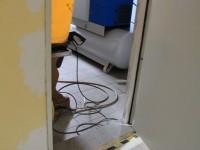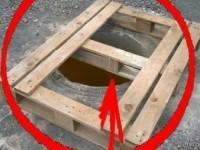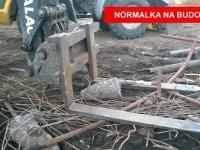Risk assessment
Occupational risk assessment has quite commonly taken root in the minds of employers. This topic usually comes up during an unexpected inspection by the National Labor Inspectorate. The issues related to it are also increasingly asked about by inspectors from the Sanitary Inspectorate during visits to companies.
Employees and managers should not be unfamiliar with this concept either. According to the regulations (Article 226 of the Labor Code), legislators clearly state that the employer must assess the occupational risk for each position. The employer is also obliged to familiarize employees with these risks before they start working.
In practice, this is rarely the case.

Who needs an occupational risk assessment?
Occupational risk assessments are primarily needed by employers. The lack of an occupational risk assessment by the employer results in a PIP or SANEPID mandate. The minimum PIP fine is PLN 1,000. But it's not just about finances. The entire company, including the owner, has the opportunity to benefit from a well-conducted risk assessment. Occupational risk assessment is to help organize safety measures within the company. It does this not only in formal terms, such as documented periodic health and safety training or pre-medical first aid training, but also in practical terms. One of the elements of this process is to become aware of and minimize the risks to which the employee is exposed in the work environment.
Throughout our careers, we are in contact with many factors, including the so-called dangerous, inconvenient, and harmful. They affect the health of every employee, manager, and employer (who must also be assessed). As a consequence, they can lead to an accident or reduce our mental and physical abilities. This problem has been shifted by the legislator to the employer, who must take effective preventive measures in their company.
You should also perform a risk assessment:
- When creating new job positions,
- After introducing changes in the organization of production technology or at the workplace,
- When there are significant changes regarding the requirements for security measures,
- In the event of an accident,
- in the event of an order issued by PIP and PIS.
Remember!
Occupational risk assessment is not a one-off, occasional activity; it is a process that is intended to continuously improve working conditions in your company. Only with a responsible approach to occupational risk assessments can you say that you take safety seriously as an employer, manager, or employee. It’s up to you to decide.
A well-conducted occupational risk assessment allows you to set goals, define tasks, and convince the employer to invest in safety.
In the field of health and safety services, we also carry out an occupational risk assessment in protected workplaces. If you require such services, please contact us; we will help you fulfill this obligation. We operate in towns such as Żary, Świebodzin, Nowa Sól, Zielona Góra and others in the province, Lubuskie and throughout the country.
DON'T WAIT FOR AN INSPECTION OR FOR LIFE TO SURPRISE YOU!
Below are examples of irregularities detected by our specialists during the analysis of workstations when developing an occupational risk assessment.
















